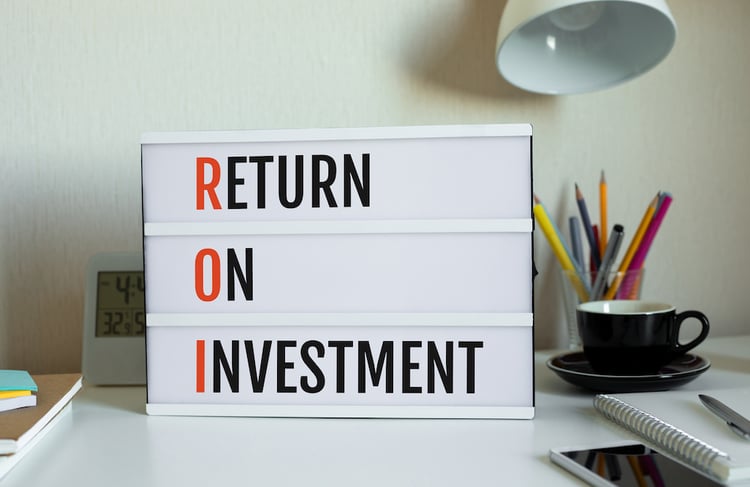While owning free and clear real estate is a goal that many real estate investors have, that may not always lead to the best financial results.
In this article, we’ll discuss some of the reasons for and against owning a property free and clear, and the surprising effect that free and clear real estate has on investment returns.
Key takeaways
- Free and clear real estate means a property is free of liens and mortgage debt.
- Paying all cash and paying off a mortgage are two ways to own real estate free and clear.
- Benefits of free and clear real estate are having a sense of security, gaining more control, and increasing cash flow.
- Drawbacks of real estate owned free and clear are fewer deductions, loss of leverage, and having too much capital in one property.
- Investors may be surprised to learn that free and clear real estate generates lower investment return rates.
What does free and clear mean in real estate?
Free and clear in real estate means that a property does not have any encumbrances, such as mortgage debt or a creditor with a lien against the property. While most people acquire real estate using financing, a property is said to be free and clear when the mortgage is finally paid off.
When real estate is bought and sold, a title search is conducted to identify existing liens or “clouds” on the property title. Having a lien on real estate isn’t always a negative. In fact, some liens are quite common, such as a mortgage lien from the lender and a property tax lien by the county between the time property taxes are assessed and the date the taxes are due.
Other liens sometimes found on real estate may include a lien on a property resulting from a lost lawsuit, or a mechanics lien filed by a contractor who did work on the property and hasn’t yet been paid.
In order for a real estate title to transfer to a new owner, liens need to be paid off so that the property can transfer free and clear. Usually liens are paid off at the time that closing and settlement occurs, using the funds a seller receives from a property sale to pay and remove the liens.
Setting the possibility of lawsuit and mechanics liens aside, some real estate investors aspire to own a rental property free and clear of any mortgage debt. While that may be a good goal, there are several benefits and drawbacks to consider before owning free and clear real estate.
Benefits of free and clear real estate
For some investors, ownership of a property free and clear means there is one less thing to worry about, like making sure money is available to make the monthly mortgage payment. Here are some of the main benefits of owning real estate free and clear.
1. Sense of securityOwning real estate free and clear can make it easier to sleep at night, because an investor feels that owning 100% of the property means that the home is all theirs. Unfortunately, having free and clear real estate isn’t always the same thing as being 100% secure. For example, an earthquake or hurricane could destroy the property, or the government could sue to seize a property under the power of eminent domain.
2. More controlHaving a free and clear property can also provide an investor with more control.
When there is no mortgage on the property, an owner who decides to sell can offer seller financing as a strategy for obtaining a higher selling price or spreading out capital gains tax payments. Instead of paying capital gains tax in one lump sum, a percentage of the capital gains tax is paid each time a buyer makes a loan payment to a seller.
Not having a monthly payment can also give a landlord more control over the monthly rent.
If the rental market turns soft, meaning that there are more homes available for rent than there are tenants, an investor with a free and clear property may have more flexibility to lower the rent and attract good tenants. On the other hand, investors with debt have to worry about generating enough rental income to pay for the mortgage.
3. Greater cash flowAnother benefit of owning a property free and clear is that there is more cash flow. For example, assume an investor purchases a single-family rental home for $120,000 using a 25% down payment.
The annual mortgage payment (principal and interest) would be about $5,200 per month, based on a 30-year fixed-rate mortgage with an interest rate of 4%. If the property generates an annual rental income of $16,000 and has operating expenses each year of $6,500, the annual cash flow would be $4,300.
On the other hand, if the same property is owned free and clear, the annual cash flow would more than double to $9,500 by not having a mortgage payment.
Drawbacks to free and clear real estate
While it may seem illogical, there are also some potential drawbacks to owning real estate free and clear.
1. Loss of leverageOne of the nice things about investing in real estate is using other people’s money to acquire 100% control of a property.
By making a small down payment on a rental property and leveraging or borrowing the balance due, an investor has the right to collect all of the monthly rental income along with any potential profit generated from appreciation over the long term.
In the example above, an investor made a $30,000 down payment to generate an annual cash flow of $4,300, which is a return of $0.143 for each $1 invested ($4,300 / $30,000). By comparison, if the same investor paid all cash for the $120,000 home to generate an annual cash flow of $9,500, the return would be just $0.079 for each $1 invested.
2. Concentration of capitalOwning real estate free and clear can make it harder to diversify investment capital, and may also create more potential risk. If a tenant or a guest is injured on the property and a landlord is found to be negligent, the entire investment could end up in the hands of the tenant and the attorney.
Also, with the way home prices keep increasing, paying cash for a property in some higher-priced real estate markets is becoming increasingly difficult. According to Zillow, the typical value of a middle price tier home is $308,220 (through September 30, 2021). That’s a lot of cash to come up with, even for the wealthiest of investors.
3. Fewer deductionsThe IRS allows real estate investors to deduct mortgage interest from rental income as a necessary expense of owning a rental property.
Even though interest rates are at historic lows, missing out on the mortgage interest deduction by owning a property free and clear might result in an investor paying more in federal and state income tax.
Of course, tax deductions and rules can be complex. An investor may wish to consult with a tax advisor or CPA to better understand the effect the mortgage interest deduction has on the amount of taxable net income.

How free and clear affects ROI
Owning a rental property free and clear also has a surprising impact on the return on investment (ROI) a real estate investor receives. Let’s use the $120,000 rental property as an example.
We’ll assume an investor makes a down payment of 25% or $30,000 and finances the rest. Based on an investment property interest rate of 4%, the annual mortgage payment (principal and interest) is $5,200. Rental income is $16,000 per year, and operating expenses (excluding the mortgage payment) are $6,500 per year.
ROI is calculated by dividing annual pre-tax cash flow by the total cash invested, and is expressed as a percentage using the following formula:
- ROI = Annual Pre-Tax Cash Flow / Total Cash Invested
Now let’s look at the effect on ROI if the property is owned free and clear compared to using leverage or financing.
Free and clear ROI
- Annual Pre-Tax Cash Flow = Rental Income – Operating Expenses
- $16,000 rental income - $6,500 operating expenses = $9,500 annual pre-tax cash flow
- ROI = $9,500 annual pre-tax cash flow / $120,000 total cash invested = 7.9%
Leveraged ROI
- Annual Pre-Tax Cash Flow = Rental Income – Operating Expenses – Mortgage Payment
- $16,000 rental income - $6,500 operating expenses - $5,200 mortgage payment = $4,300 annual pre-tax cash flow
- ROI = $4,300 annual pre-tax cash flow / $30,000 down payment = 14.3%
In this example, by using leverage an investor has nearly doubled the return on investment compared to owning the rental property free and clear.
Final thoughts
There are good reasons for and against owning free and clear real estate, and the right choice for one investor may be wrong for another. While having real estate that is free and clear may give some investors a better sense of security and control, one of the biggest drawbacks is generating a lower potential return on investment.









